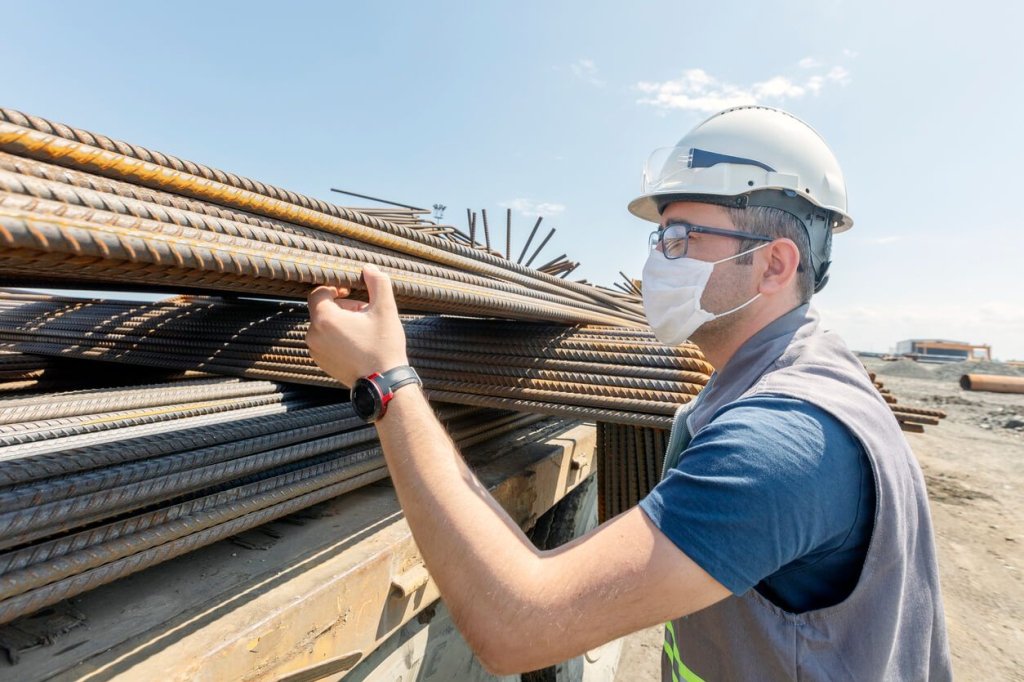Workplace Inspections Safety Talk
Frequent workplace inspections are a necessary safety precaution on the jobsite. Closely monitoring workspaces for potential hazards prevents avoidable accidents and keeps crew members safer and more productive.
Why you should conduct regular inspections
Conducting multiple daily inspections may seem repetitive, but safety issues can happen at any time due to a large variety of factors that are difficult to predict. With regular inspections, potential concerns can be identified early and resolved immediately to avoid incidents no matter the cause.
There are a few basic types of hazards regular inspections help control.
Work area hazards
Work area hazards can vary widely depending on the type of work that’s being done. On a construction site, many different dangerous scenarios are possible, some that require extreme caution like working from great heights or handling hazardous materials. Inspections verify that every worksite is free from unnecessary physical, chemical, ergonomical, or environmental danger.
Work area hazards are often caused by a lack of awareness. Crew members may forget or fail to follow safety guidelines while they are busy with project tasks. It is the designated inspector’s responsibility to identify lapses in procedure.
Other hazards are caused by environmental factors. For example, a tree branch may be in the way of a ladder, or there may be an increased risk of slips and falls due to a recent storm.
Common work area hazards include:
Misplaced or broken tools and objects
Faulty or unsafely operated equipment
Too many people in the workspace
Too few crew members in the workspace
Environmental hazards
Bad weather
Fire hazards
Electrical hazards
Missing on incorrect labels
Housekeeping issues
To avoid injury, only the people, objects, and equipment that are needed to safely complete the task at hand should be present in the work area at any given time.

Biological hazards
In addition to workspace hazards and weather conditions, contractors need to be aware of insects and animals, especially when working outdoors. When these creatures enter the work area, they may cause distractions or damage materials. They may also bite or scratch workers, and they sometimes carry diseases or produce toxins that trigger dangerous allergic reactions.
In particular, workplace inspectors should look for signs of:
Spiders
Ticks
Wasps and bees
Mosquitos
Snakes
When dealing with biological hazards, special personal protective equipment may be required.
How to conduct regular inspections
Inspections must be conducted thoroughly. Organized construction safety checklists can help workplace inspectors make sure they’re paying attention to the right details.
Inspection frequency
Before each workday begins, all work areas must be inspected. As the day progresses, inspections should continue periodically, and a final inspection should be conducted once all the day’s tasks are finished.
In addition to these daily workspace inspections, construction companies may conduct weekly, monthly, or annual inspections that address specific safety concerns in greater detail. Likewise, governmental regulations may dictate that a health and safety representative from the state must perform their own inspections of a company’s worksites on a periodic basis.
Resolving issues
Any time inspectors identify a hazard, work must be stopped in the affected area until the issue is resolved. All workers must be notified of any hazards immediately.
Once the work area is deemed safe, progress may resume.
Inspection documentation
Inspection results and any safety hazards that are identified during the inspection process should be carefully documented. Keeping a detailed record of historical data (like an annotated construction site safety checklist) can help resolve disputes if an accident occurs and help construction companies improve overall safety processes.
Personal protective equipment
All crew members should wear their personal protective equipment (PPE) at the appropriate times. It is designed to protect workers according to the job they are performing.
Proper PPE use should be monitored along with workplace hazards during regular inspections.
Some common types of PPE are:
Earplugs
Steel toe boots
Safety vests
Coveralls
Hard hats
Work gloves
Face shield
Rubber gloves
Harnesses
Eye protection
It’s important to remember that, while it helps protect workers, wearing PPE does not replace the need for following other safety guidelines.
Common risks on a construction site
Construction work is often physically demanding. Contractors are frequently be susceptible to the following risks on the jobsite:
Strain while manually lifting or handling materials and equipment
Inspections help construction crews complete tasks safely and effectively. By reducing workplace hazards, regular inspections protect workers from these and other common risks.
The importance of site inspections
When workers become complacent, incidents happen. Safety awareness is essential for preventing illness and injury.
Regular inspections reinforce safety rules and help workers stay on track. Don’t skip this crucial aspect of construction risk management.
Find and schedule topics faster
Raken's toolbox talk app makes it easy to choose from a pre-loaded library (or upload your own), then schedule and assign topics for any project. We'd love to show you how in a demo and get you started on a free trial.